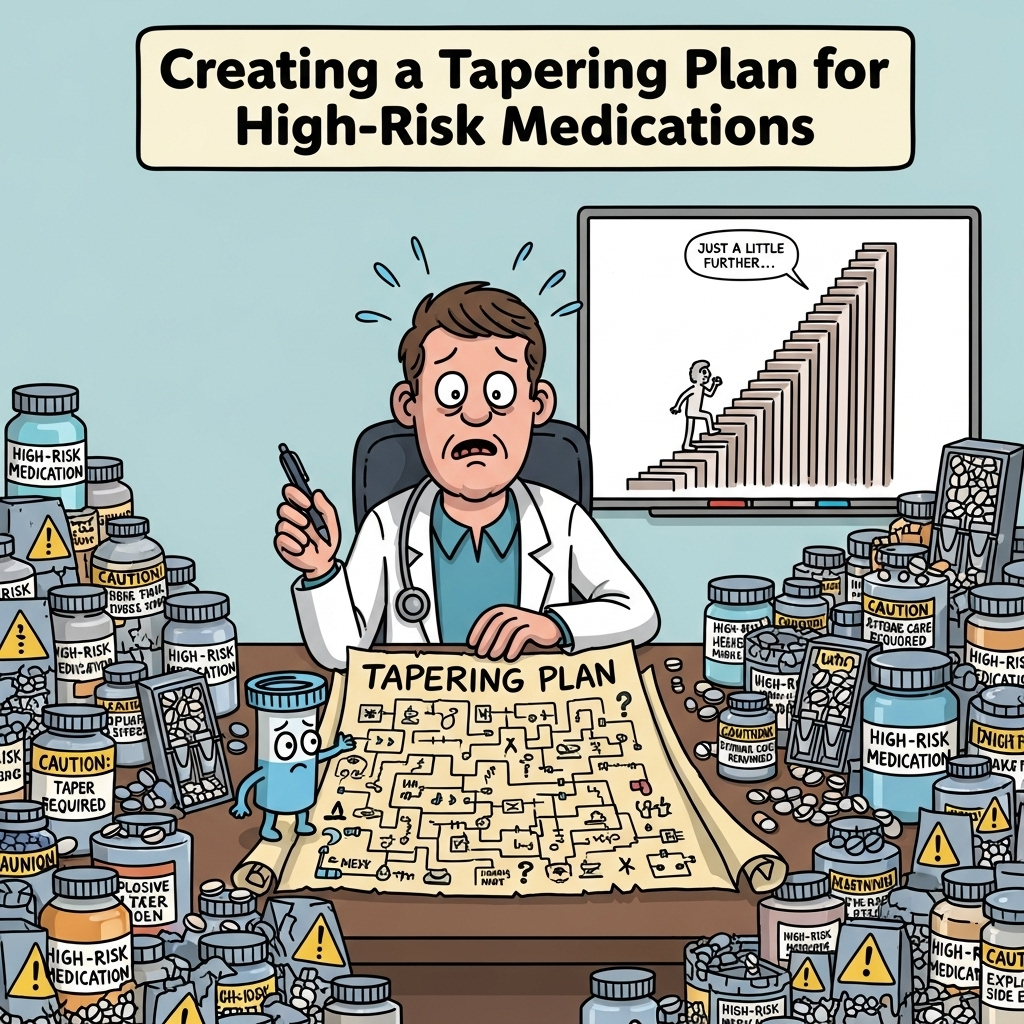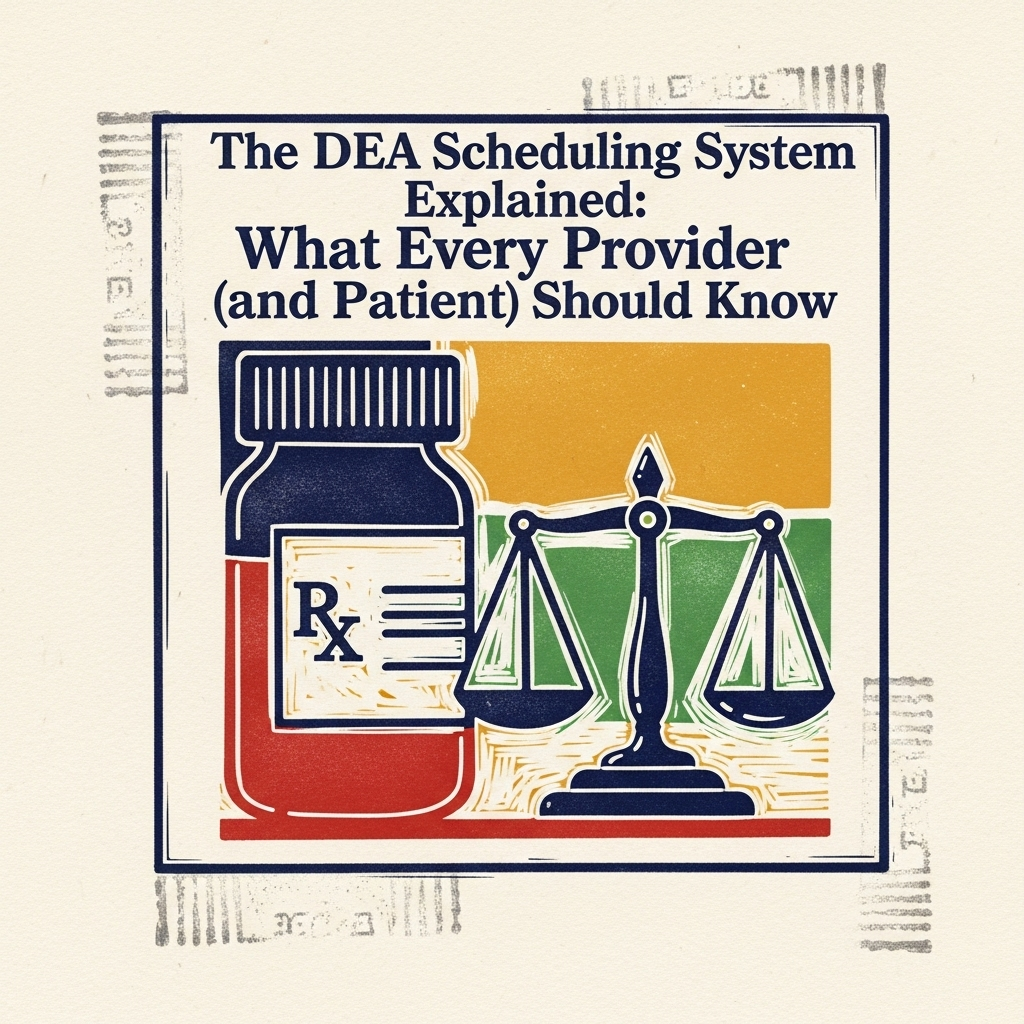
Creating a Tapering Plan for High-Risk Medications
Doug Jorgensen
April 5, 2025
Introduction: The Goal Is Safety, Not Punishment
Tapering a patient off a high-risk medication—whether an opioid, benzodiazepine, or stimulant—is one of the most challenging processes in clinical practice.
Done poorly, it can damage trust, worsen symptoms, or create withdrawal risks.
Done well, it can improve safety, maintain the provider–patient relationship, and support long-term health.
A good tapering plan is patient-centered, clinically justified, and thoroughly documented.
Step 1: Clarify the Reason for Tapering
Common Triggers:
- Evidence of misuse or diversion.
- Adverse effects outweighing benefits.
- Clinical guidelines recommending lower doses.
- Changes in patient risk profile (e.g., new comorbidities).
- Regulatory or payer requirements.
- The patient’s condition improved following treatment.
Document the rationale clearly in the patient’s chart.
Step 2: Assess the Patient’s Baseline
Before starting:
- Review current dose, duration, and frequency.
- Document baseline symptoms, function, and quality of life.
- Identify co-prescribed medications, especially other CNS depressants.
- Screen for substance use disorder, depression, or anxiety.
Step 3: Choose an Appropriate Taper Rate
General Guidance (adjust based on patient factors):
- Opioids: Most patients tolerated 25% reductions every 5 days, but some need a slower taper..
- Benzodiazepines: High-risk medications often require a gradual 5-10% dose reduction every 2-6 weeks to minimize withdrawal. Some patients halve their dose while maintaining frequency, then reduce frequency (e.g., qid to tid, bid, hs, then discontinuation). Tapering plans are collaborative and tailored to individual needs. Patients must understand how to manage anxiety and address acute symptoms that may arise during the tapering process..
- Stimulants: Usually less physiologic dependence, but still taper to avoid rebound symptoms.
Be prepared to slow the taper if withdrawal symptoms emerge.
Step 4: Engage the Patient in the Plan
- Explain the clinical reasons for tapering.
- Outline the expected benefits and potential challenges.
- Provide written taper schedule and monitoring plan.
- Emphasize that the goal is to improve safety and function—not to punish or abandon the patient.
Step 5: Incorporate Supportive Measures
- Non-Pharmacologic Therapies – Physical therapy, counseling, CBT, mindfulness practices.
- Non-Controlled Medications – NSAIDs, antidepressants, sleep aids, or muscle relaxants as appropriate.
- Specialist Referrals – Pain management, behavioral health, or addiction medicine if indicated.
Step 6: Monitor Closely
- Schedule follow-up visits every 1–4 weeks during taper.
- Reassess pain, function, mood, and withdrawal symptoms.
- Adjust taper rate as needed for tolerance and safety.
- Document patient progress and any modifications to the plan.
Step 7: Prepare for Possible Complications
- Withdrawal symptoms (anxiety, insomnia, GI upset, tremors).
- Psychological resistance or fear of worsening pain.
- Potential for relapse into misuse—especially if not supported.
Address issues proactively rather than reactively.
Step 8: Document Everything
- Taper rationale and schedule.
- Patient education and informed consent.
- Progress at each visit.
- Adjustments and the reasons behind them.
Common Mistakes to Avoid
- Going Too Fast – Increases withdrawal and dropout risk.
- Poor Communication – Leads to mistrust and patient noncompliance.
- Lack of Alternatives – Removing medication without offering other treatment options leaves a care gap.
- Inconsistent Follow-Up – Missed visits can derail the taper and increase risk.
Final Thoughts: Tapering Is a Partnership
When tapering is approached as a collaborative process—with patient buy-in, clear communication, and strong monitoring—it can lead to safer prescribing and better outcomes.
The safest taper is the one that balances clinical urgency with the patient’s ability to adapt.
About the Author
Douglas J. Jorgensen, DO, CPC, FAAO, FACOFP
Dr. Doug is a physician, consultant, and national educator on healthcare compliance, high-risk medication tapering, and risk mitigation strategies. He works with providers to design taper plans that prioritize safety, function, and regulatory alignment.


